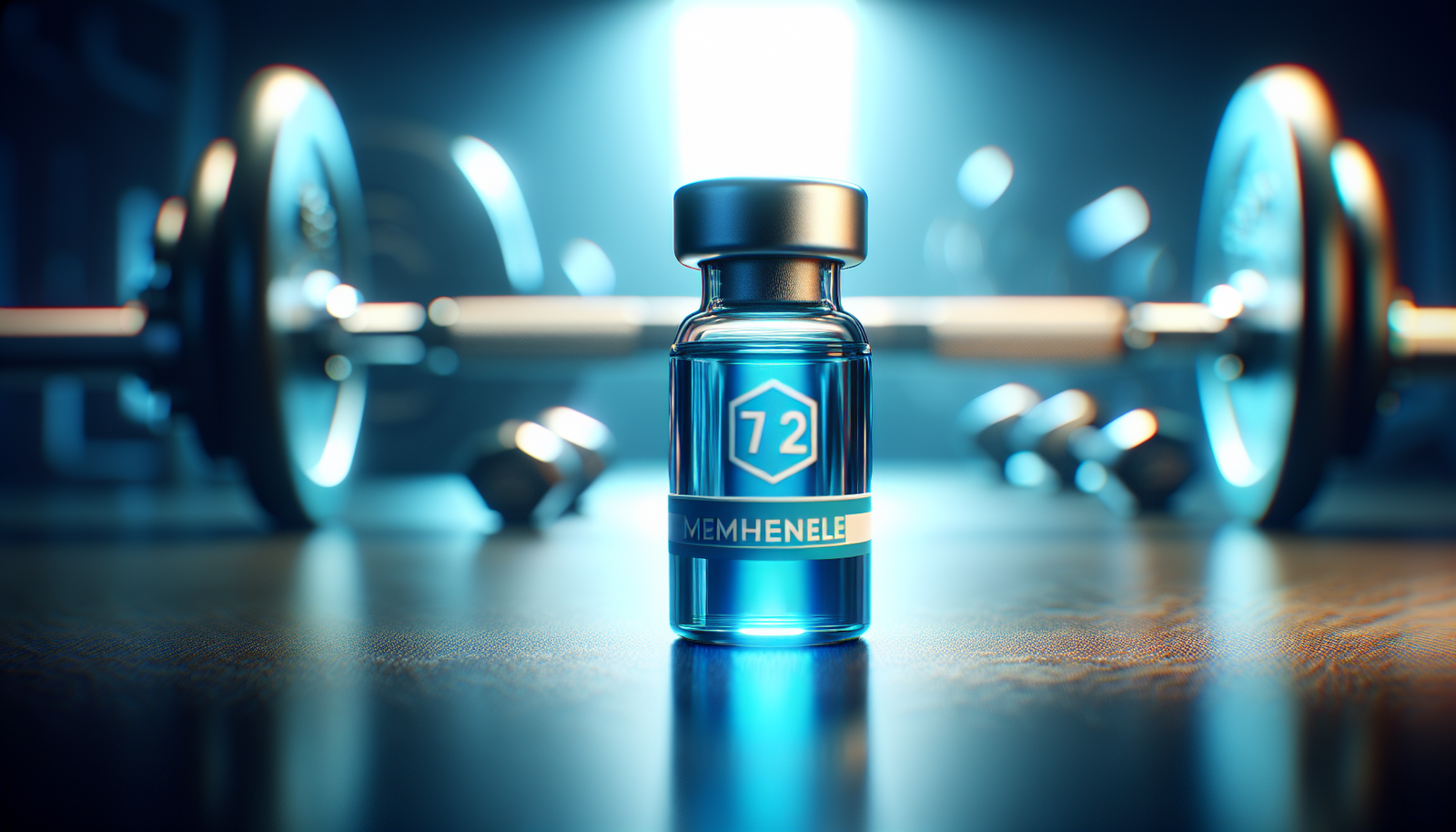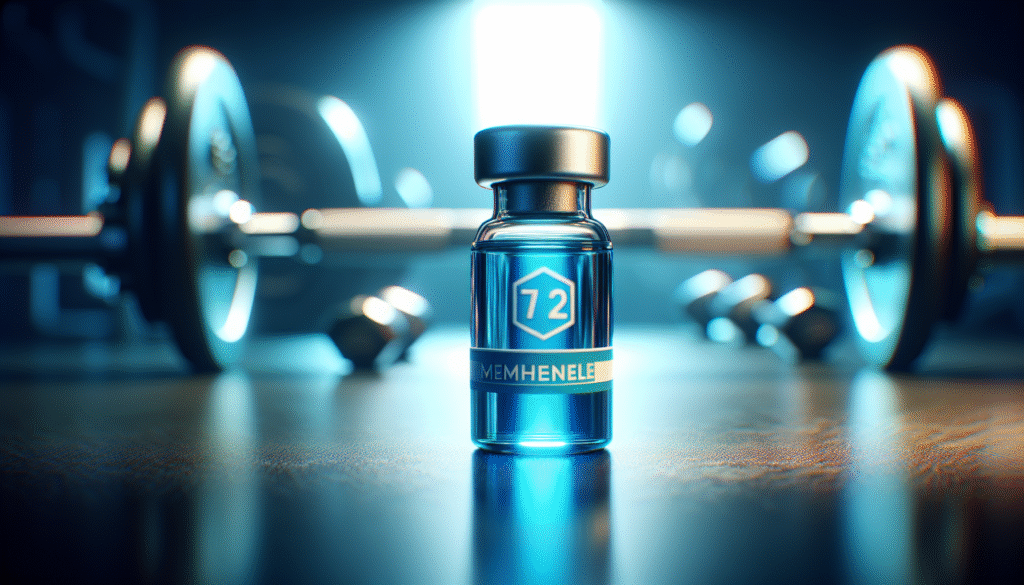
What if there was a compound that could potentially elevate your workout performance and enhance recovery?

Understanding Methylene Blue
Methylene Blue is a chemical compound with a long history of medicinal use. Initially developed in the late 19th century for its antiseptic properties, it has since gained attention in various scientific fields, including neuroscience and physiology. Its capacity to act as a redox dye makes it interesting from a physiological standpoint, particularly concerning energy production in the body.
Historical Background
Methylene Blue was first synthesized in 1876 and has been used in various medical applications, from treating malaria to serving as a stain in microscopy. Its properties as an electron carrier in cellular respiration suggest potential benefits in enhancing physical performance. Understanding its historical significance can shed light on its current applications and relevance in contemporary fitness regimes.
Mechanism of Action
To comprehend how Methylene Blue might influence your workouts and recovery, it is essential to explore its mechanism of action.
Electron Transport Chain
Methylene Blue plays a role in the electron transport chain (ETC), a series of complexes within the mitochondria that generate adenosine triphosphate (ATP), the primary energy currency of cells. By acting as an alternative electron carrier, Methylene Blue can potentially enhance ATP production, leading to increased energy availability during high-intensity exercise.
Mitochondrial Function
Mitochondria, often referred to as the powerhouse of the cell, are essential for energy metabolism. Methylene Blue has been shown to improve mitochondrial function, allowing for improved aerobic capacity and endurance. Enhanced mitochondrial efficiency can lead to better performance during prolonged physical activities.
Potential Benefits of Methylene Blue in Workouts
Understanding the potential benefits of Methylene Blue can provide insights into its role in optimizing workouts.
Improved Endurance
Research suggests that Methylene Blue may enhance endurance by increasing oxygen utilization in the muscles. When your muscles are more efficient at using oxygen, you can sustain longer workouts, thereby improving your overall performance.
Enhanced Recovery
Post-exercise recovery is crucial for athletes and fitness enthusiasts alike. Methylene Blue may assist in reducing oxidative stress and inflammation following intense workouts. By mitigating these effects, recovery times can be shortened, allowing you to return to training sooner.
Increased Mental Clarity
Mental fatigue can significantly impact performance during workouts. Methylene Blue may offer cognitive benefits by enhancing blood flow to the brain and improving neuronal function. With increased mental clarity, you are better equipped to focus on your workouts and push through barriers.
Synergistic Effects with Other Supplements
Methylene Blue may work synergistically with other supplements, enhancing their overall effectiveness. When combined with compounds like creatine or beta-alanine, the potential for increased energy and endurance might be magnified, fostering optimum workout conditions.
Considerations and Dosage
While the potential benefits of Methylene Blue are compelling, it is essential to consider proper dosages and potential side effects.
Recommended Dosage
Optimal dosage is still a topic of debate in scientific circles. However, studies suggest a range of 0.5 to 4 milligrams per kilogram of body weight as a starting point. It is advisable to consult with a healthcare professional before starting any new supplement regimen to ensure safety and efficacy.
Potential Side Effects
Methylene Blue is generally considered safe when used appropriately. However, possible side effects may include:
- Nausea: Some users report gastrointestinal discomfort.
- Skin Discoloration: Methylene Blue can cause a blue or green tint to the skin or urine.
- Drug Interactions: It may interact with certain medications, particularly antidepressants known as monoamine oxidase inhibitors (MAOIs).

Scientific Studies and Evidence
Research on Methylene Blue’s effects on exercise and recovery is ongoing, and varying results have emerged from different studies.
Endurance Studies
Several studies have examined the impact of Methylene Blue on endurance performance. In a controlled environment, subjects who ingested Methylene Blue before exercise showed improved endurance metrics compared to placebo groups. However, results can vary based on individual physiology and fitness levels.
Recovery Studies
Research indicates that Methylene Blue may reduce markers of muscle damage, suggesting its efficacy in enhancing recovery. A notable study revealed that individuals who took Methylene Blue after intense workouts reported less muscle soreness, indicating faster recovery times.
Limitations of Current Research
While findings are promising, it is important to acknowledge the limitations of current research. Many studies are small-scale, lacking diverse populations, and long-term effects remain largely uncharted. Further research is necessary to establish definitive conclusions about Methylene Blue’s efficacy in workout enhancement and recovery.
Applying Methylene Blue To Your Regimen
Integrating Methylene Blue into your fitness routine requires careful consideration and planning. Here’s how you can incorporate it effectively.
Consultation with Professionals
Before adding Methylene Blue to your supplementation regimen, a discussion with a healthcare provider or a sports nutritionist is crucial. They can provide personalized advice based on your health status, fitness goals, and any existing conditions.
Cycling and Timing
If you decide to incorporate Methylene Blue, consider cycling its usage to maximize benefits. This means using it during peak training times or specific phases of recovery, rather than routine daily use. Timing its intake before workouts may yield the best results.
Monitoring Progress
Keep track of how Methylene Blue affects your workouts and recovery. Record improvements in endurance, changes in recovery times, or any side effects you may experience. This data can inform future decisions about your supplementation strategy.
Conclusion
Considering the potential of Methylene Blue to enhance workouts and recovery opens up exciting possibilities for those looking to improve their fitness. While historical data and preliminary studies indicate benefits, the substantiation of these claims requires ongoing research.
Until more definitive conclusions can be drawn, remain cautious and informed. By integrating Methylene Blue thoughtfully, in consultation with qualified professionals, you may find a new element to help elevate your fitness regimen and recovery paths. Remember to keep an eye on scientific advancements and stay informed about the latest developments regarding this intriguing compound.